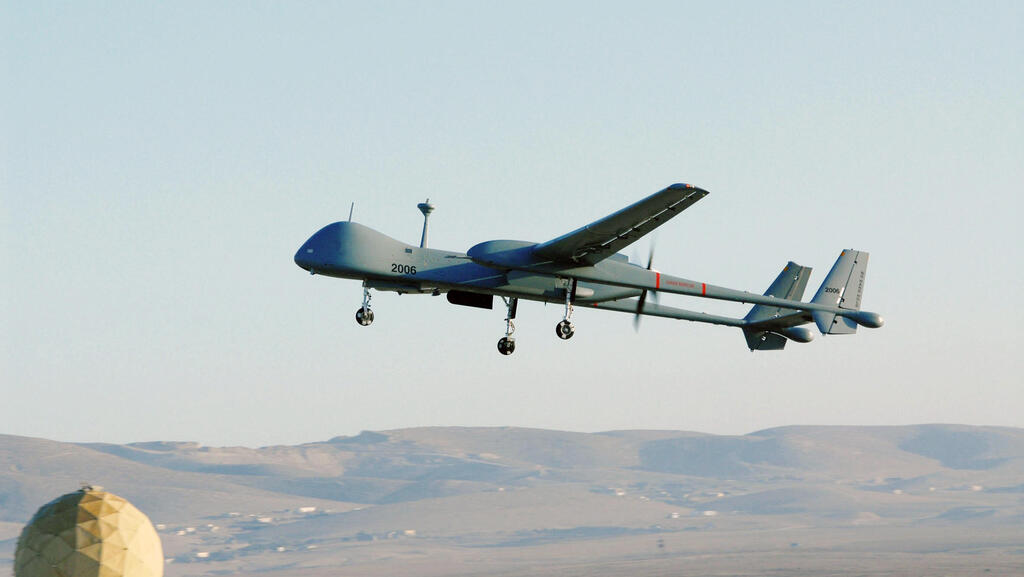
“We brought Gaza to Iran”: Israeli drones strike 500 targets behind enemy lines
Air Force UAVs hunted missile crews and crippled Iran’s launch capabilities during the 12-Day War.
The launch of dozens of missiles at Israel was prevented during the war with Iran by unmanned aerial vehicles (UAVs) operated by the Israeli Air Force, which used Israel Aerospace Industries (IAI)-built munitions to strike missiles on the ground. These munitions are significantly cheaper than the costly interceptors that would otherwise have been used if the launches had succeeded.
About 500 targets were attacked in Iran using drones operated by the Air Force, including IAI’s Heron TP and Elbit Systems’ Hermes 900, which operated freely in Iranian airspace, much like they do over Gaza and Lebanon.
"We brought Gaza to Iran," said Danny Gold, head of the Directorate of Defence Research & Development (DDR&D) at the Ministry of Defense. A security source added: “The UAVs were a lethal hunting machine in Iran, creating a sense of constant pursuit for the enemy. Their noise alone deterred teams preparing missile launches.”
According to Gold, these unique offensive and defensive capabilities were developed over about 25 years. Security sources stressed that, in preparation for future conflicts with Iran, existing systems will be upgraded, alongside development of new technologies to maintain Israel’s technological edge.
Related articles:
The Israel Missile Defense Organization reported on Tuesday an 86% success rate in intercepting ballistic missiles launched at the country. During the conflict, approximately 550 surface-to-surface missiles were fired at cities, IDF bases, and strategic sites nationwide. Most were intercepted by Israel’s Arrow 3 and David’s Sling systems, as well as by U.S.-supplied THAAD and Aegis systems that reinforced Israel’s air defenses.
The Defense Ministry is now locked in a heated dispute with the Finance Ministry over a 60 billion shekel increase to the defense budget. The Defense Ministry argues this massive sum is needed to invest in the IDF’s force buildup for a future confrontation with Iran and to replenish munitions and equipment, including new drones to replace those lost in Iranian skies. Planned investments also include spending in the space and satellite sectors and the development of new technologies to preserve Israel’s edge.
However, the Finance Ministry opposes most of these demands, accusing the defense establishment and IDF of uncontrolled procurement and wasteful spending, which it says risks dragging the Israeli economy into a “lost decade” by diverting huge public resources into security. Against this backdrop, the Finance Ministry has recently refused to authorize new production orders for various defense systems.
